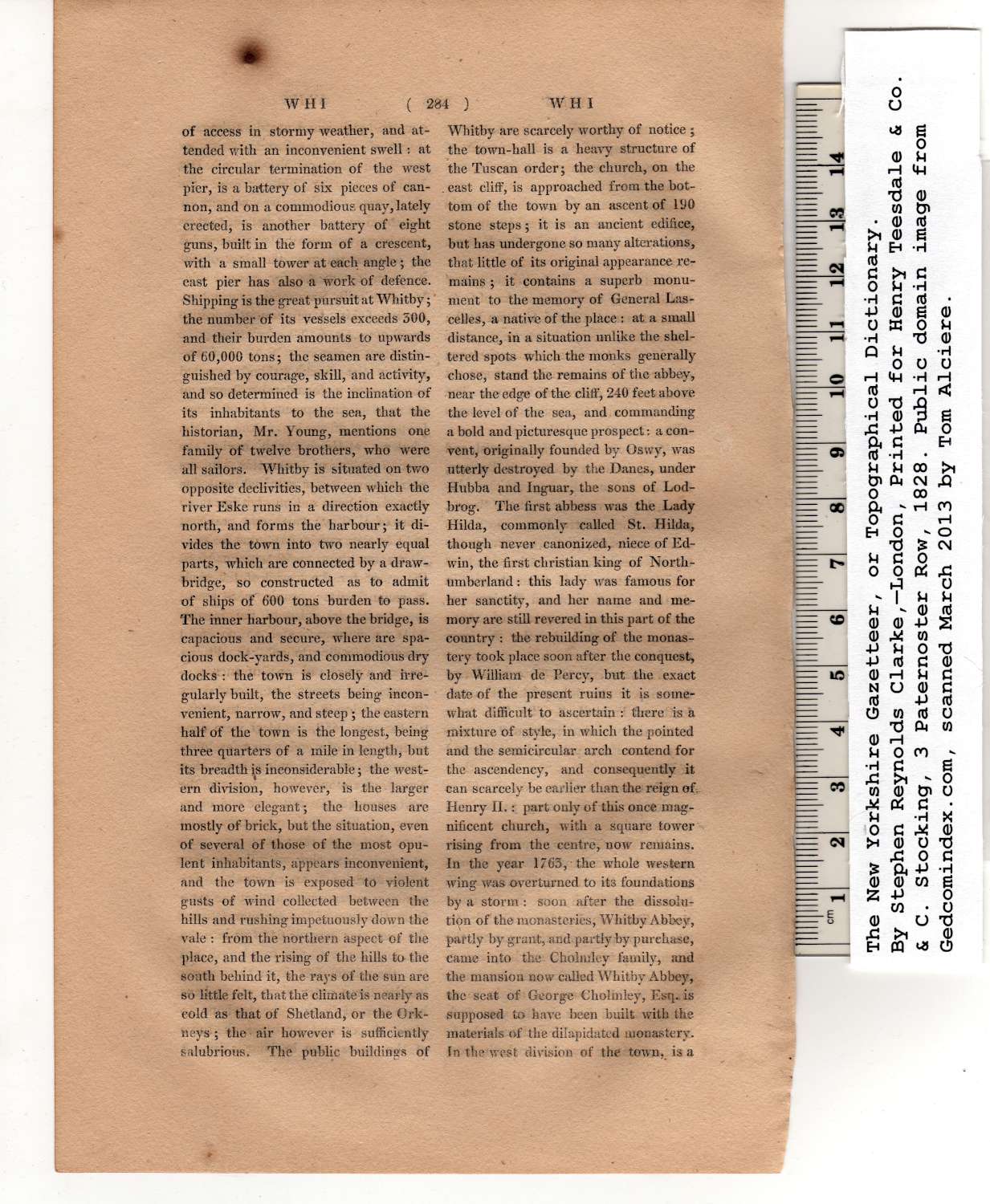|
of access in stormy weather, and at-
tended with an inconvenient swell: at
the circular termination of the west
pier, is a battery of six pieces of can-
non, and on a commodious quay, lately
erected, is another battery of eight
guns, built in the form of a crescent,
with a small tower at each angle ; the
east pier has also a work of defence.
Shipping is the great pursuit at Whitby;
the number of its vessels exceeds 300,
and their burden amounts to upwards
of 60,000 tons; the seamen are distin-
guished by courage, skill, and activity,
and so determined is the inclination of
its inhabitants to the sea, that the
historian, Mr. Young, mentions one
family of twelve brothers, who were
all sailors. Whitby is situated on two
opposite declivities, between which the
river Eske runs in a direction exactly
north, and forms the harbour; it di-
vides the town into two nearly equal
parts, which are connected by a draw-
bridge, so constructed as to admit
of ships of 600 tons burden to pass.
The inner harbour, above the bridge, is
capacious and secure, where are spa-
cious dock-yards, and commodious dry
docks : the town is closely and irre-
gularly built, the streets being incon-
venient, narrow, and steep; the eastern
half of the town is the longest, being
three quarters of a mile in length, but
its breadth is inconsiderable; the west-
ern division, however, is the larger
and more elegant; the houses are
mostly of brick, but the situation, even
of several of those of the most opu-
lent inhabitants, appears inconvenient,
and the town is exposed to violent
gusts of wind collected between the
hills and rushing impetuously down the
vale : from the northern aspect of the
place, and the rising of the hills to the
south behind it, the rays of the sun are
so little felt, that the climate is nearly as
cold as that of Shetland, or the Ork-
neys ; the air however is sufficiently
salubrious. The public buildings of |
Whitby are scarcely worthy of notice ;
the town-hall is a heavy structure of
the Tuscan order; the church, on the
. east cliff, is approached from the bot-
tom of the town by an ascent of 190
stone steps; it is an ancient edifice,
but has undergone so many alterations,
that little of its original appearance re-
mains ; it contains a superb monu-
ment to the memory of General Las-
celles, a native of the place : at a small
distance, in a situation unlike the shel-
tered spots which the monks generally
chose, stand the remains of the abbey,
near the edge of the cliff, 240 feet above
the level of the sea, and commanding
a bold and picturesque prospect: a con-
vent, originally founded by Oswy, was
utterly destroyed by the Danes, under
Hubba and Inguar, the sons of Lod-
brog. The first abbess was the Lady
Hilda, commonly called St. Hilda,
though never canonized, niece of Ed-
win, the first Christian king of North-
umberland : this lady was famous for
her sanctity, and her name and me-
mory are still revered in this part of the
country : the rebuilding of the monas-
tery took place soon after the conquest,
by William de Percy, but the exact
date of the present ruins it is some-
what difficult to ascertain : there is a
mixture of style, in which the pointed
and the semicircular arch contend for
the ascendency, and consequently it
can scarcely be earlier than the reign of,
Henry II.: part only of this once mag-
nificent church, with a square tower
rising from the centre, now remains.
In the year 1763, the whole western
wing was overturned to its foundations
by a storm : soon after the dissolu-
tion of the monasteries, Whitby Abbey,
partly by grant, and partly by purchase,
came into the Choimley family, and
the mansion now called Whitby Abbey,
the seat of George Choimley, Esq- is
supposed to have been built with the
materials of the dilapidated monastery.
In the west division of the town, is a |
